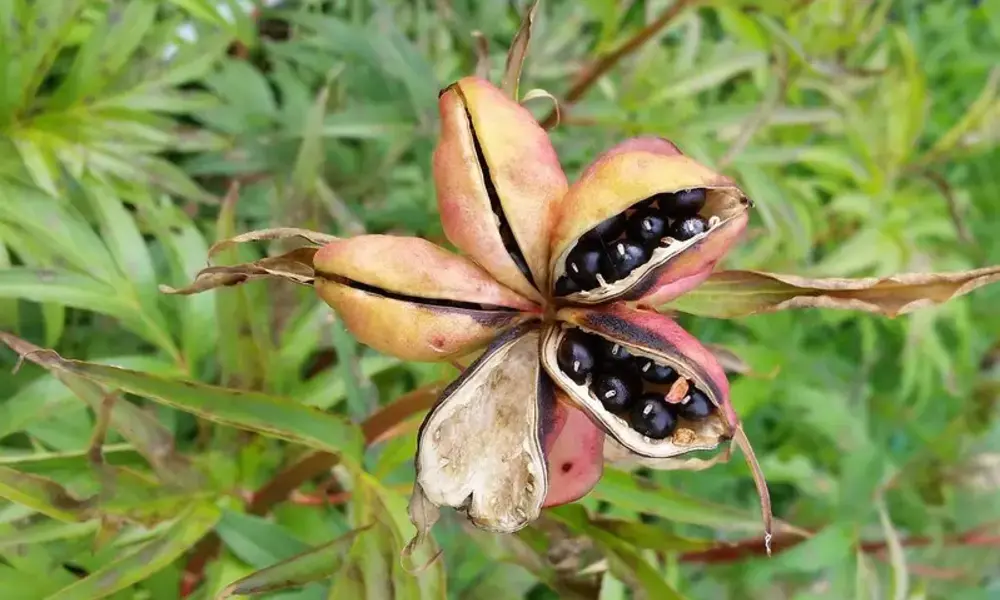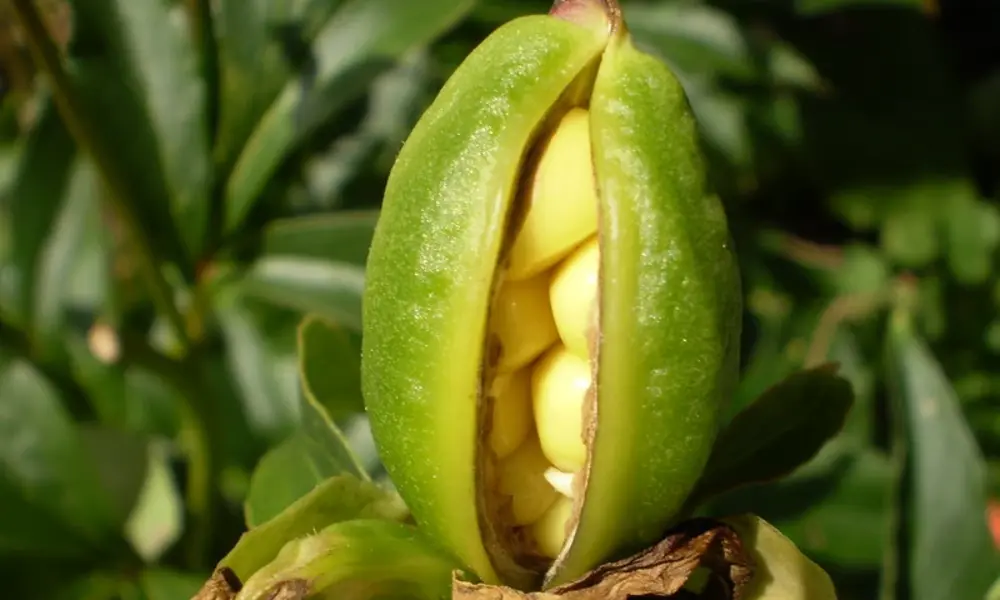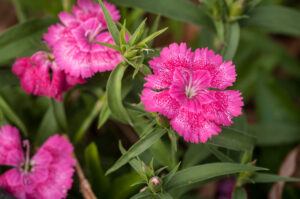Are you fascinated by the delicate beauty of peonies? Have you ever wondered how to grow these enchanting flowers from seeds? If so, you’ve come to the right place! In this introduction, we will delve into the common problems faced by those trying to cultivate peonies from seeds.
But don’t worry, we won’t abandon you. We promise to provide you with valuable insights gained from extensive research in this field. Furthermore, we’ll present you with a practical solution that will help you successfully grow peonies from seeds.
And finally, we’ll wrap it up with our opinion on the matter. So, let’s embark on this exciting journey together and unlock the secrets of cultivating peonies from seeds!
Types of Peonies
There are three main types of peonies:
1. Herbaceous Peonies
Herbaceous peonies are the most common and widely grown type. They have soft stems that die back to the ground during winter and re-emerge in the spring.
Herbaceous peonies offer a wide range of flower forms and colors, making them a popular choice for garden borders and cut flower arrangements.
2. Tree Peonies
Tree peonies, also known as woody peonies, are deciduous shrubs that produce large, woody stems. Unlike herbaceous peonies, tree peonies do not die back in winter and provide year-round structure to the garden. These peonies often have larger flowers and a longer blooming period.
3. Intersectional Peonies
Peonies that combine herbaceous and tree varieties are known as intersectional peonies or Itoh peonies. They offer the best of both worlds, combining the sturdy stems of tree peonies with the wide range of colors and flower forms found in herbaceous peonies. Intersectional peonies are known for their disease resistance and extended blooming period.

Benefits of Growing Peonies from Seeds
While growing peonies from seeds requires patience and time, there are several benefits to this method:
- Cost-effectiveness: Growing peonies from seeds is more affordable compared to purchasing established plants or roots.
- Wider variety of options: By starting from seeds, you have access to a broader selection of peony varieties, allowing you to experiment with different colors, flower forms, and fragrance profiles.
- Enjoying the process: Growing peonies from seeds is a rewarding experience that allows you to witness the entire life cycle of the plant, from seed to bloom. It can be a fulfilling journey for gardening enthusiasts and those seeking a deeper connection with their plants.
In the following sections, we will guide you through the process of growing peonies from seeds, ensuring that you have all the information and tools necessary for success.
Gathering Peony Seeds
To begin growing peonies from seeds, you’ll need to collect ripe seeds. Here’s how to do it:
When and where to collect seeds: Peony seeds are typically ready for harvest in late summer or early fall when the seed pods start to turn brown and crack open. Choose a dry day to collect the seeds.
Identifying ripe seeds: Ripe peony seeds are usually dark brown or black, firm, and have a hard outer shell. Avoid collecting immature or shriveled seeds.
Extracting seeds from peony pods: Gently open the cracked seed pods and remove the seeds. You can use your fingers or a small knife to carefully extract the seeds. Place the seeds in a clean container or envelope for further preparation.
Preparing the Seeds for Planting
Before planting the peony seeds, they need to go through a preparation process called stratification. This helps mimic the natural winter conditions that peony seeds require for successful germination. Here’s how to prepare the seeds:
- Cleaning and drying the seeds: Remove any remaining debris or pulp from the seeds by rinsing them gently in water. Use a paper towel to gently pat them dry or let them air dry.
- Stratifying the seeds: Peony seeds need a cold period to break their dormancy. Place the cleaned seeds in a damp paper towel or a plastic bag filled with moistened peat moss or vermiculite. Seal the bag or wrap the towel around the seeds, and then refrigerate them for 8 to 12 weeks. Check the moisture levels periodically and ensure they remain slightly damp.
- Soaking the seeds: After stratification, you can enhance germination rates by soaking the seeds in room temperature water for 24 to 48 hours. This softens the hard seed coat and helps trigger germination.
Germinating Peonies Seeds
Once the stratification and soaking process is complete, it’s time to germinate the peony seeds. There are a few methods you can use:
- Using the baggie method: Moisten a paper towel and place the seeds on one half of the towel. Fold the towel over to cover the seeds and place it inside a resealable plastic bag. Leave a portion of the bag open to let air in. Keep the bag in a warm location with indirect light, and check the moisture levels regularly to prevent drying out. Within two to three weeks, germination ought should happen.
- Preparing a seed tray: Fill a seed tray or small pots with a well-draining seed-starting mix. Plant the peony seeds about 1 inch apart and cover them with a thin layer of soil. Water the seeds gently to moisten the soil. Place the tray or pots in a warm area with indirect light. Maintain consistent moisture levels in the soil by misting or light watering. It typically takes 3 to 4 weeks for germination.
- Optimal conditions for germination: Peony seeds require temperatures between 60°F and 70°F (15°C to 21°C) for successful germination. Ensure they receive sufficient indirect light, but avoid exposing them to direct sunlight, as it may cause excessive heat buildup.
Transplanting Peonies Seedlings
Once the peony seedlings have germinated and developed a few sets of true leaves, they can be transplanted into individual containers or the garden. Follow these steps for successful transplantation:
- Selecting the right container or garden spot: Choose containers with drainage holes or prepare a garden spot with well-draining soil. Peonies prefer a location with full sun to partial shade.
- Preparing the soil: If transplanting into containers, use a high-quality potting mix. For garden planting, amend the soil with organic matter such as compost to improve drainage and fertility.
- Planting the seedlings: Dig a hole or create a small depression in the soil that is large enough to accommodate the seedling’s root system.
Gently remove the seedling from its current container or seed tray, taking care not to damage the delicate roots. Place the seedling in the hole or depression and backfill with soil, ensuring the crown of the seedling sits at ground level. Lightly firm the soil around the base of the seedling.

A Comprehensive Table for Growing Peonies from Seeds
| Stage | Description | Tips and Guidelines | |
|---|---|---|---|
| Seed Selection | Choose high-quality peony seeds. | Look for seeds from reputable suppliers. | |
| Stratification | Cold treatment to break seed dormancy. | Place seeds in a sealed plastic bag and refrigerate for 8-12 weeks. | |
| Soil Preparation | Prepare well-draining soil. | Use loamy soil mixed with organic matter like compost. | |
| Sowing | Plant seeds in prepared soil. | Sow seeds 1/4 inch deep and 12-18 inches apart. | |
| Watering | Keep soil consistently moist. | Water regularly, but avoid overwatering to prevent rot. | |
| Germination | Wait for seedlings to emerge. | Germination can take several weeks to a few months. | |
| Thinning | Thin out overcrowded seedlings. | Leave the strongest seedlings, removing weaker ones. | |
| Transplanting | Move seedlings to larger pots or garden beds. | Transplant when seedlings have 2-3 true leaves. | |
| Sunlight | Provide full sun or partial shade. | Peonies prefer at least 6 hours of direct sunlight daily. | |
| Fertilizing | Feed seedlings with a balanced fertilizer. | Use a slow-release fertilizer according to package instructions. | |
| Mulching | Apply mulch to retain soil moisture. | Use organic mulch to suppress weeds and conserve moisture. | |
| Support | Stake tall varieties for support. | Place stakes near the young plants for stability. | |
| Pest Control | Monitor for pests and diseases. | Take action if you notice any issues, such as aphids or fungal infections. | |
| Blooming | Expect blooms in 2-3 years. | Patience is required as peonies take time to mature. | |
| Winter Care | Protect plants during winter. | Mulch around the base and cover with frostcloth if needed. | |
| Maintenance | Prune and divide plants as needed. | Prune after flowering and divide clumps every few years. |
Please note that growing peonies from seeds can be a long and challenging process. It’s important to have realistic expectations and be prepared for the possibility of variations in flower colors or forms due to the hybrid nature of peonies grown from seeds.
How To Grow Peonies From Seed Indoors?
Growing peonies from seed indoors can be an exciting and rewarding experience. By starting the seeds indoors, you have better control over the growing conditions and can ensure the seedlings’ protection during their early stages.
With proper care, patience, and a touch of a green thumb, you can witness the magic of peony seedlings sprouting and growing into beautiful blooming plants right in the comfort of your home.
So grab your gardening tools, get your hands dirty, and embark on this delightful journey of growing peonies from seed indoors!
Nurturing Peony Plants
As your peony seedlings grow and mature, they require ongoing care to promote healthy growth and vibrant blooms. Here are some essential nurturing practices:
- Pruning and staking: Once the seedlings reach a height of 6 to 8 inches, you can pinch off the top growth to encourage branching and bushier plants.
- Provide support to the stems using stakes or peony rings to prevent them from falling over under the weight of flowers. This is particularly important for tree peonies.
- Fertilizing and amending the soil: Feed your peony seedlings with a balanced organic fertilizer in early spring, just as new growth begins. Follow the recommended dosage on the fertilizer package. Additionally, you can amend the soil around the plants with compost or well-rotted manure each year to enhance soil fertility and drainage.
- Supporting healthy growth: Monitor the soil moisture levels and water the plants as needed. Mulch around the base of the plants with a layer of organic mulch, such as wood chips or straw, to conserve moisture and suppress weed growth. Keep the area around the plants weed-free to minimize competition for nutrients.
Timeframe for Blooming
Growing peonies from seeds requires patience, as it takes time for the plants to mature and produce their first blooms.
Typically, peony seedlings take about 2 to 3 years to reach blooming size. For some types, it might take longer, though. Be prepared to wait and provide consistent care and attention to your peony plants during this time.
Harvesting Peony Seeds
Once your peony plants have bloomed, you can collect seeds for future propagation. Follow these steps for harvesting peony seeds:
- Knowing when the seeds are ready: Allow the flowers to fade and the seed pods to develop. The seed pods should turn brown and start to split open naturally. This indicates that the seeds are mature and ready for harvesting.
- Collecting seeds: Gently pluck the seed pods from the plant and place them in a container or envelope. Ensure the pods are completely dry before opening them to extract the seeds. Store the collected seeds in a cool, dry place for future use.
Common Challenges and Troubleshooting
While growing peonies from seeds can be a rewarding experience, it’s important to be aware of common challenges and how to address them:
- Dealing with slow germination: Peony seeds may take several weeks to germinate, so be patient and avoid overwatering during this period. Maintain consistent moisture levels and provide optimal germination conditions as mentioned earlier.
- Addressing damping-off disease: Damping-off, a fungal disease, can affect young peony seedlings. To prevent this, ensure proper air circulation, avoid overcrowding, and use sterile soil or seed-starting mix. If damping-off occurs, remove affected seedlings and treat the remaining ones with a fungicide.
- Managing pests: Watch out for common pests such as aphids, slugs, and spider mites. Regularly inspect your plants and use organic pest control methods like insecticidal soap or biological controls to manage infestations.
- Supporting weak stems: Peony seedlings with weak stems may benefit from staking or using peony rings. Provide support early on to prevent the stems from bending or breaking under the weight of flowers.
- Understanding bloom variability: When growing peonies from seeds, it’s important to note that the resulting plants may exhibit variability in bloom color, form, and fragrance. Embrace this diversity as part of the charm of growing peonies from seeds.
Conclusion
Growing peonies from seeds is a rewarding and fulfilling process that allows you to witness the journey of a seedling developing into a beautiful blooming plant. By doing the actions outlined in this guide, from collecting and preparing seeds to nurturing the seedlings and beyond, you can successfully grow peonies from scratch.
Remember to provide proper care, including watering, sunlight, and protection from pests and diseases, as well as patience as the plants take time to mature and bloom. Enjoy the beauty and fragrance of your homegrown peonies!
 Exploring the Truth: Do Blueberries Have Seeds? |
 Growing Dianthus from Seed: A Complete Guide |
FAQs
Q1: Can all peony varieties be grown from seeds?
While it is possible to grow many peony varieties from seeds, some hybrid varieties may not come true from seeds. It is best to check with the specific variety or seed supplier for more information.
Q2: How long does it take to grow peonies from seed?
Growing peonies from seed requires patience as it typically takes 2 to 3 years for the seedlings to reach blooming size.
Q3: How do you start peonies from seed pods?
To start peonies from seed pods, collect mature pods, and extract and clean the seeds. Prepare the seeds through stratification and soaking. Choose a germination method, provide optimal conditions, and wait for seeds to germinate into seedlings.
Q4: Can I plant peony seeds directly in the garden?
Yes, you can plant peony seeds directly in the garden. However, starting them indoors or in containers allows for better control of the growing conditions and protection during the early stages.
Q5: Can I crossbreed different peony varieties to create new hybrids?
Yes, it is possible to crossbreed different peony varieties to create new hybrids. However, this process requires specific knowledge and expertise in peony breeding techniques.
